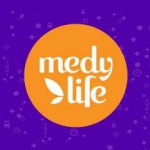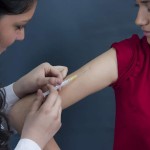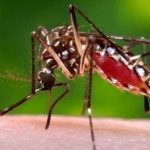Leprosy
Leprosy, also known as Hansen’s disease (HD), a chronic infectious disease caused by a Mycobacterium (Mycobacterium leprae) affecting especially the skin and marginal nerves. It is characterized by the formation of nodules or macules that enlarge and spread with loss of sensation and eventually paralysis, wasting of muscle, and production of deformities called also Hansen’s disease. This infection is caused by the bacteria Mycobacterium leprae and Mycobacterium lepromatosis . It is primarily a granulomatous disease of the peripheral nerves and mucosa of the upper respiratory tract, skin lesions are the primary external sign . If left untreated, leprosy can be progressive, causing permanent damage to the skin, nerves, limbs and eyes.
Symptoms
The disease has following symptoms:
Skin lesions that may be faded/discolored
Growths on the skin
Thick, stiff or dry skin
Severe pain
Numbness on affected areas of the skin
Muscle weakness or paralysis (especially in the hands and feet)
Eye problems that may lead to blindness
Enlarged nerves (especially those around the elbow and knee)
A stuffy nose
Ulcers on the soles of feet
Causes
Mycobacterium leprae and Mycobacterium lepromatosis are the causative agents of leprosy. Mycobacterium can spread from person to person. This might happen when someone with the disease coughs or sneezes. This can release droplets into the air. It might also happen if somebody is exposed to other nasal fluids (also known as secretions) that might be contaminated with the bacteria.
Risk factors: Those living in endemic areas with poor conditions such as:
Inadequate bedding
Contaminated water
Insufficient diet, or other diseases that compromise immune function
Diagnosis
Diagnosis of leprosy is most commonly based on the clinical signs and symptoms.
Lepromin test:
Positive skin smears
Skin lesion consistent with leprosy and with definite sensory loss, with or without thickened nerves
If one suspect leprosy. He/she should visit to the doctor for diagnosis and treatment.
Treatments
A number of leprostatic agents are available for treatment. Multi drug therapy (MDT) as given by WHO.
Multibacillary (MB) leprosy For adults the standard regimen is:
Rifampicin: 600 mg once a month Dapsone: 100 mg daily
Clofazimine: 300 mg once a month and 50 mg daily
Duration= 12 months.
Paucibacillary (PB) leprosy : For adults the standard regimen is:
Rifampicin: 600 mg once a month
Dapsone: 100 mg daily
Duration= six months
Single Skin Lesion Paucibacillary leprosy : For adults the standard regimen is a single dose of:
Rifampicin: 600 mg
Ofloxacin: 400 mg
Minocycline: 100 mg
If one suspect leprosy. He/she should visit to the doctor for diagnosis and treatment.
Preventions
The BCG vaccine offers a variable amount of protection against leprosy in addition to tuberculosis . This vaccine appears to be about 25% effective with two doses working better than one. Development of a more effective vaccine is still going on.
References:
Centre of Disease Control and Prevention
WHO
National Leprosy Eradication Programme









